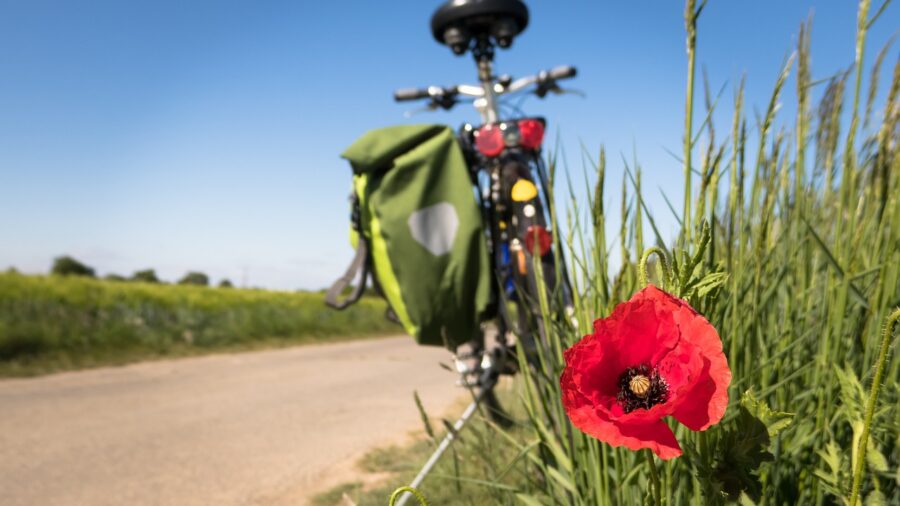All vehicle owners in NSW must be covered by a greenslip in case they injure or kill someone on the road. While drivers can injure or kill cyclists, cyclists can also injure or kill other road users. Yet, they won’t be properly compensated unless the rider can pay. Should cyclists have to buy a greenslip?
Few cyclists have insurance
Everyone who is injured or killed by a motorist is covered by a greenslip. This means a cyclist who is injured or killed in a road accident can claim against the greenslip of the driver involved. When the cyclist doesn’t know the identity of the driver (or the driver is uninsured), they can still claim against the nominal defendant.
It doesn’t work the other way around. Most cyclists are not covered by insurance. Some cycling bodies, such as Bicycle Network, do include personal injury and/or public liability insurance with their membership fees. Other cyclists may have insurance for just their bicycles and other property. But no cyclist is required to buy a CTP greenslip.
However, what happens when a cyclist on the footpath injures a pedestrian or other cyclist? The injured person may seek compensation from the negligent cyclist who has hit them.
Even if the cyclist is liable, the chances of the pedestrian being able to make a claim depends on the wealth of the cyclist. If they are not insured, or have very low funds, the injured person won’t receive the compensation they need. This is the original reason why a green slip was mandated for motorists.
Are cyclists required to ride safely?
Just as motorists have to follow the road rules and take reasonable care to avoid injuring other road users, so must cyclists. They have to follow the road rules and take reasonable care while using the roads.
For example, all riders in NSW must wear a helmet while cycling or be fined $349. This fine is much higher than for most cycling offences, eg:
- Ride bike on footpath – $116
- Bike rider move into path of pedestrian or driver – $116
- Ride bike too close to rear of vehicle – $116
However, there is a hefty fine of $464 for cycling that is negligent, furious or reckless.
As our earlier blog said, some cyclists prefer to ride on bicycle paths, rather than on the roads.
Do cyclists have to use bicycle paths?
If cyclists don’t use nearby bicycle paths, are they taking reasonable care? For example, if cyclists ignore the bicycle path, ride on the road and are injured, should they be able to claim on the green slip of the car involved?
It would be interesting to know how many cyclists and motorists are aware of the difference between bicycle paths and bicycle lanes. In fact, the rules are different for each one:
- When a bicycle lane is marked on the road, riders must use it unless it’s not practical.
- Bicycle paths are off-road and are optional for bicycle riders to use.
Of course, it is up to a lawyer to decide whether a cyclist has been negligent or not in choosing one or the other.
How many cycling accidents happen in Sydney?
Statistics for the last 5 years in the Sydney LGA show cyclists are far more likely to be injured than die in a road accident:
- 2 male cyclists died.
- 396 cyclists had minor or serious injuries.
- 72% (285) of cyclists who had any injuries were male.
- 112 cyclists with any injuries were female.
Most at risk generally were older, male bicycle riders. In the past 5 years, 100 male (21 female) cyclists, 40-69, died or were injured in the Sydney LGA. They were also more likely to crash fatally on high speed roads at above 40 kph.
Where are the accident black spots?
Oxford St is the city’s busiest cycle route. More cycle crashes are reported in this street than anywhere else in the City of Sydney.
During peak hour:
- The busiest intersection is Oxford, Flinders and Bourke Sts with 2,701 daily cycle trips.
- The second busiest intersection is Oxford St, Lang Rd, Moore Park Rd and Queen St with 2,378 daily cycle trips.
Peak hour bicycle trips across the Sydney LGA increased by 18% in March 2023, compared to last year. As more people take up cycling in the City of Sydney, the chances of accidents with pedestrians or motorists are likely to increase.
Should cyclists have to buy a greenslip?
Some people believe cyclists, like motorists, should be registered to use the roads. If they were registered, they would be covered by a CTP green slip in a road accident.
Opposition to this idea has been strong. After all, cyclists don’t create any wear and tear on the roads. The chances of a cyclist killing or injuring a motorist or pedestrian are much lower than for a motorist travelling in a heavy, fast-moving vehicle.
The Queensland government has said the cost to the public of administering a registration scheme for cyclists outweighs its benefits. In NSW, even the idea that cyclists should at least carry compulsory ID was scrapped in December 2016 after a survey found 93% already did.
Another alternative would be to mandate public liability insurance for regular cyclists in the CBD and on high speed roads. Public liability insurance is sometimes required for activities that are not inherently dangerous, such as busking. It could be argued that mandatory public liability insurance for cyclists would at least protect pedestrians or motorists who are injured by them. Then it would be up to the cyclist to decide whether or not to have personal injury insurance.
Should cyclists have to buy a green slip? What do you think?
Also see The war between drivers and cyclists.
Make sure your green slip is up to date.


your opinion matters: